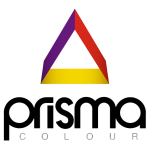
Dispersibility vs distribution
The dispersion process and how to achieve optimum dispersion is the key to success in colouration for concentrate manufacturers such as Prisma Colour.
It is often the case that confusion surrounds the understanding of what dispersion actually means when referring to colour and it is a term used when distribution is really what is meant.
Basic considerations for dispersion.
Pigments (organic or inorganic) are soluble and must be dispersed using technical processes. They are made up of solid, primary particles and are crystaline in nature.
Polymer Soluble Dyes however, do not need to be dispersed as they dissolve and are soluble into the media in which they will in colour. In this case, dyes need melting and distributing effectively in the host polymer/carrier system. As a result, these are usually transparent in the application when processed correctly.
Pigments scatter light in the host substrate and therefore are not as transparent as dyes.
Undispersed / poorly dispersed pigment under a microscope.
Prisma Colour are experts in the field of dispersion and providing top quality solid and liquid dispersions for the plastics, rubber, aqueous and silicone dispersion fields.
Technically, there are four stages or steps to the dispersion process:
1) Breaking down the particles
2) Wetting of the particles
3) Distribution of the particles
4) Stabilisation of the melt or liquid to be a usable form.
Some of the effects of poor dispersion can be:
– Streaks of colour, rather than uniform colour development
– Surface defects on lay down of paints
– Fluctuations in colour intensity and deviations in shade
– Presence of visible pigment agglomerates as colour specks
– Clogging of injection moulding gates or screen packs in the extruder
– Tearing of the bubble during blown film extrusion
– Filter value high: breakage of fibres, monofilaments and tapes
– Printing problems due to surface defects
– Reduced mechanical strength of film and fibres.
Have you seen these issues with your supply?
Contact us now to enhance your formulations and further improve your liquid dispersion requirements!



Paris sportifs avec 1xbet rdc telecharger : pre-match & live, statistiques, cash-out, builder de paris. Bonus d’inscription, programme fidelite, appli mobile. Depots via M-Pesa/Airtel Money. Informez-vous sur la reglementation. 18+, jouez avec moderation.
Plateforme parifoot rdc : pronos fiables, comparateur de cotes multi-books, tendances du marche, cash-out, statistiques avancees. Depots via M-Pesa/Airtel Money, support francophone, retraits securises. Pariez avec moderation.
Оформите онлайн-займ https://zaimy-82.ru без визита в офис: достаточно паспорта, проверка за минуты. Выдача на карту, кошелёк или счёт. Прозрачный договор, напоминания о платеже, безопасность данных, акции для новых клиентов. Сравните предложения и выберите выгодно.
Лучшая подборка дня: https://buybuyviamen.com
Оформите займ https://zaimy-86.ru онлайн без визита в офис — быстро, безопасно и официально. Деньги на карту за несколько минут, круглосуточная обработка заявок, честные условия и поддержка клиентов 24/7.
Оформите займ https://zaimy-57.ru онлайн без визита в офис — быстро, безопасно и официально. Деньги на карту за несколько минут, круглосуточная обработка заявок, честные условия и поддержка клиентов 24/7.
Дізнатись більше: https://info365.com.ua/zdorovia.html
Найкраще для вас: https://infokom.org.ua/budivnytstvo.html
Официальный сайт Kraken kra44 at безопасная платформа для анонимных операций в darknet. Полный доступ к рынку через актуальные зеркала и onion ссылки.
Официальный сайт Kraken https://kra44-cc.at безопасная платформа для анонимных операций в darknet. Полный доступ к рынку через актуальные зеркала и onion ссылки.
Перевод с голландского – перевод документов цена самара. Срочный перевод документов? Самара поможет оперативно! Нотариальное заверение. Гарантия качества. Конфиденциально.
Перевод справок срочно – перевод документов с англ на рус. Самара, перевод документов! Выполним быстро. Нотариус, любые языки. Качество и конфиденциальность. Доступные цены.
дизайн интерьера спб дизайн интерьера
дизайн интерьера спб разработка дизайна интерьера
Read More: https://davydovka.ru/blogs/30/%d0%9a%d1%83%d0%bf%d0%b8%d1%82%d1%8c-%d0%b0%d0%ba%d0%ba%d0%b0%d1%83%d0%bd%d1%82%d1%8b-facebook-%d0%b1%d1%8b%d1%81%d1%82%d1%80%d0%be-%d0%b8-%d0%bd%d0%b0%d0%b4%d0%b5%d0%b6%d0%bd%d0%be
Recent Changes: https://otzvu.ru/forums/topic/verificzirovannyj-biznes-menedzher-fejsbuk/
Your point of view caught my eye and was very interesting. Thanks. I have a question for you. https://accounts.binance.com/register-person?ref=IXBIAFVY
Just wanted to drop a line about rwincom. I found their website a bit confusing at first, but once you get past that, they have some interesting games. Withdrawal times are average. You can find it at rwincom if you’re interested.